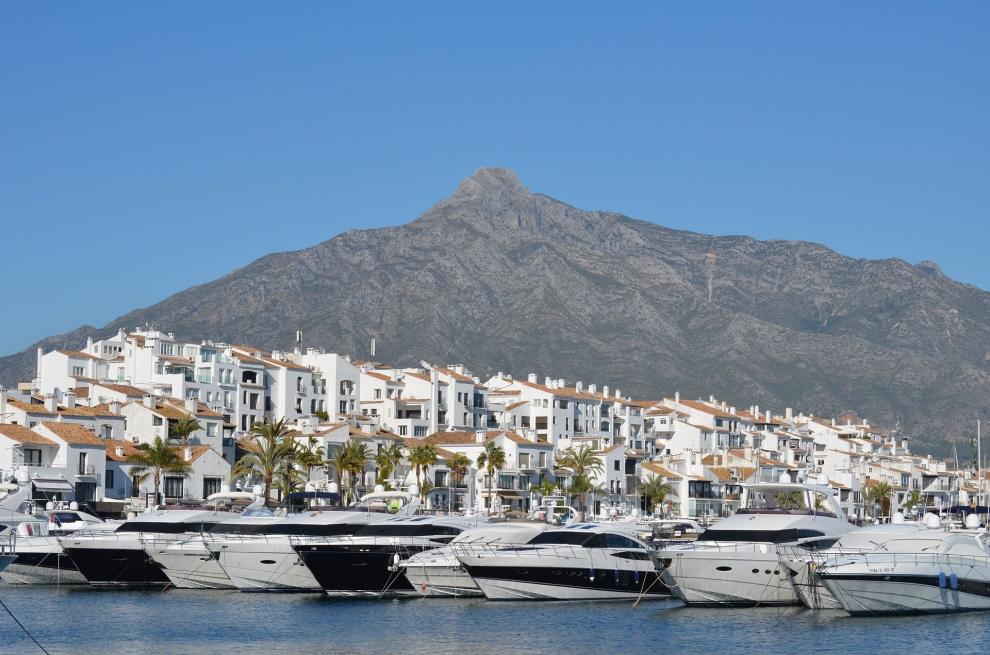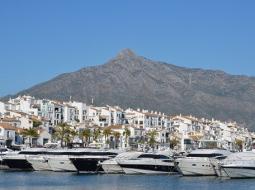Thessaloniki gets ready for its metro launch in November
The underground rapid transit lines have been under construction for almost two decades due to various project delays
 TheMayor.EU logo
TheMayor.EU logo 
In the early decades of the 20th century the first hotels were built: the El Comercial, which opened in 1918, and the Miramar, which opened its doors in 1926. During the Second Republic, Marbella experienced major social changes and contentious political parties mobilized.
After the Second World War, Marbella was a small jasmine-lined village with only 900 inhabitants. Ricardo Soriano, Marquis of Ivanrey, moved to Marbella and popularised it among his rich and famous friends. In 1943 he acquired a country estate located between Marbella and San Pedro called El Rodeo, and later built a resort there called Venta y Albergues El Rodeo, beginning the development of tourism in Marbella.
In the 1980s, Marbella continued as a popular jet set destination. However, the 1987 kidnapping of Melodie Nakachian, the daughter of local billionaire philanthropist Raymond Nakachian and the Korean singer Kimera, focused less-favourable international media scrutiny on Marbella, even though a police raid ultimately freed her.
Marbella is a city and municipality located in southern Spain, part of the province of Malaga in the autonomous community of Andalusia. It makes up a part of the Costa del Sol and is the headquarters of the Association of Municipalities of the region; it is also the central hub of the judicial district of the same name. Marbella itself is situated on the Mediterranean Sea, between the city of Malaga and the Straits of Gibraltar, in the foothills of the Sierra Blanca. The municipality covers a total of 117 square kilometres crossed by highways on the coast, which serve as its main entrances.
In 2012 the population of the city was 140,473 inhabitants, making it the second-most populous municipality in the province of Malaga and the eighth in Andalusia.
The service sector accounts for 60% of employment, while trade accounts for almost 20%. The main branches of the service sector are hospitality, real estate and business services. The number of business establishments in the service sector accounts for 87.5% of the total, those in construction account for 9.6%, and in industry, 2.9%. Of these companies, 89.5% have fewer than 5 employees and only 2.3% have a staff of at least 20 employees.
In 2008 a study by the Institute of Statistics of Andalusia (IEA) based on 14 variables (income, equipment, training, etc.), found Marbella was the Andalusian city with the best development of the general welfare and the highest quality of life. According to the results of the study, Marbella ranks highest in the number of private clinics, sports facilities and private schools.

The old town of Marbella includes the ancient city walls and the two historical suburbs of the city, the Barrio Alto, which extends north, and the Barrio Nuevo, located to the east. The ancient walled city has retained a nearly identical layout as the one it boasted in the 16th century. Here one can find the Plaza de los Naranjos, an example of Castilian Renaissance design, its plan laid out in the heart of Old Town after the Christian reconquest. Around the square are arranged three remarkable buildings: the town hall, built in 1568 by the Catholic Monarchs in Renaissance style, the Mayor's house, which combines Gothic and Renaissance elements in its façade, with a roof of Mudejar style and murals inside, and the Chapel of Santiago, the oldest religious building in the city.
The beach-front in Marbella covers a total of 27 kilometres of coastline within the limits of the city, divided into some 24 beaches with different features; however, due to the expansion of the municipality, they have now all been semi-urbanized. They generally boast moderate surf, golden or dark sand, fine, medium or coarse in texture, as well as some gravel.
Plaza Naranjos 1, 29601, Marbella